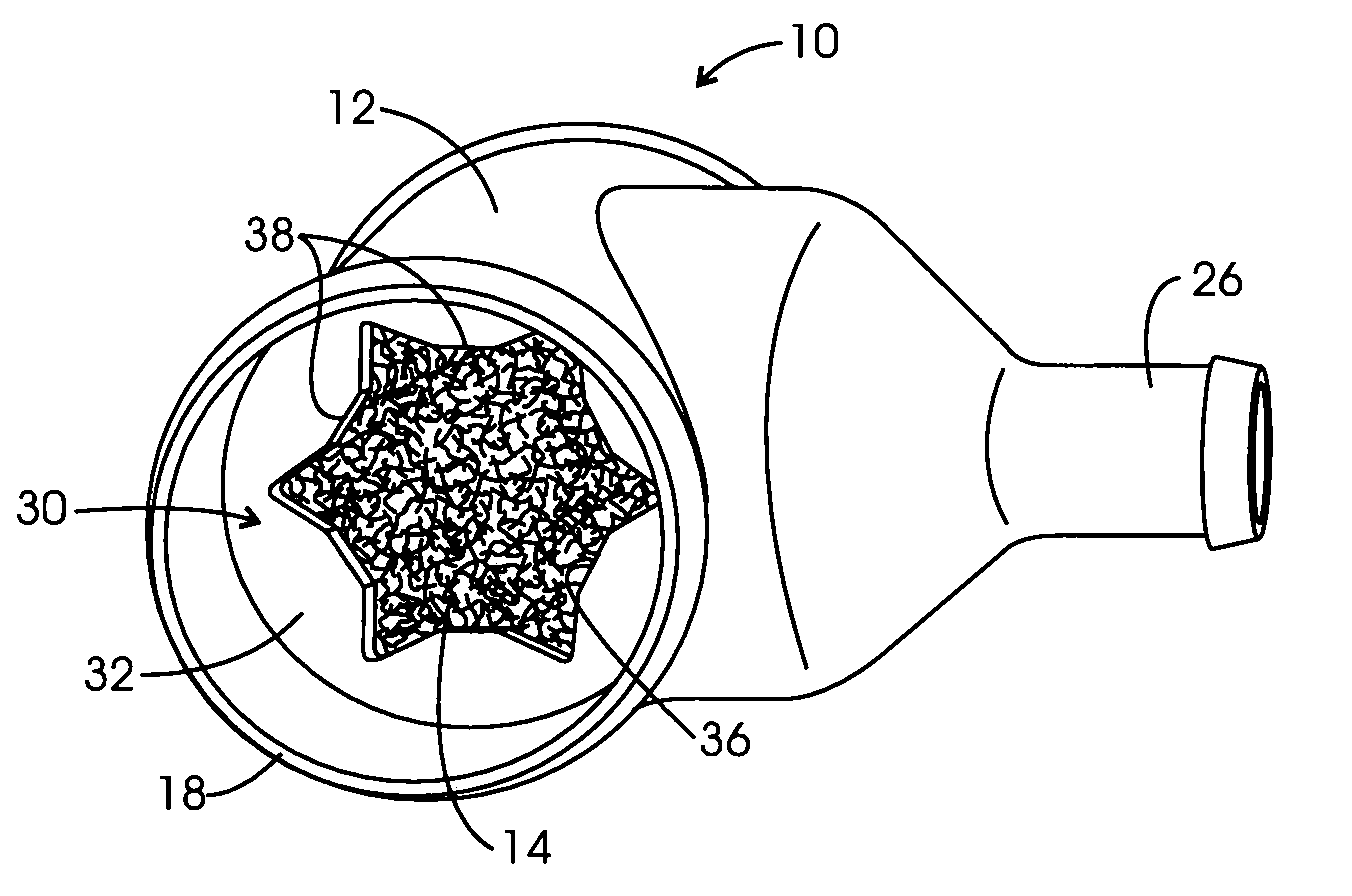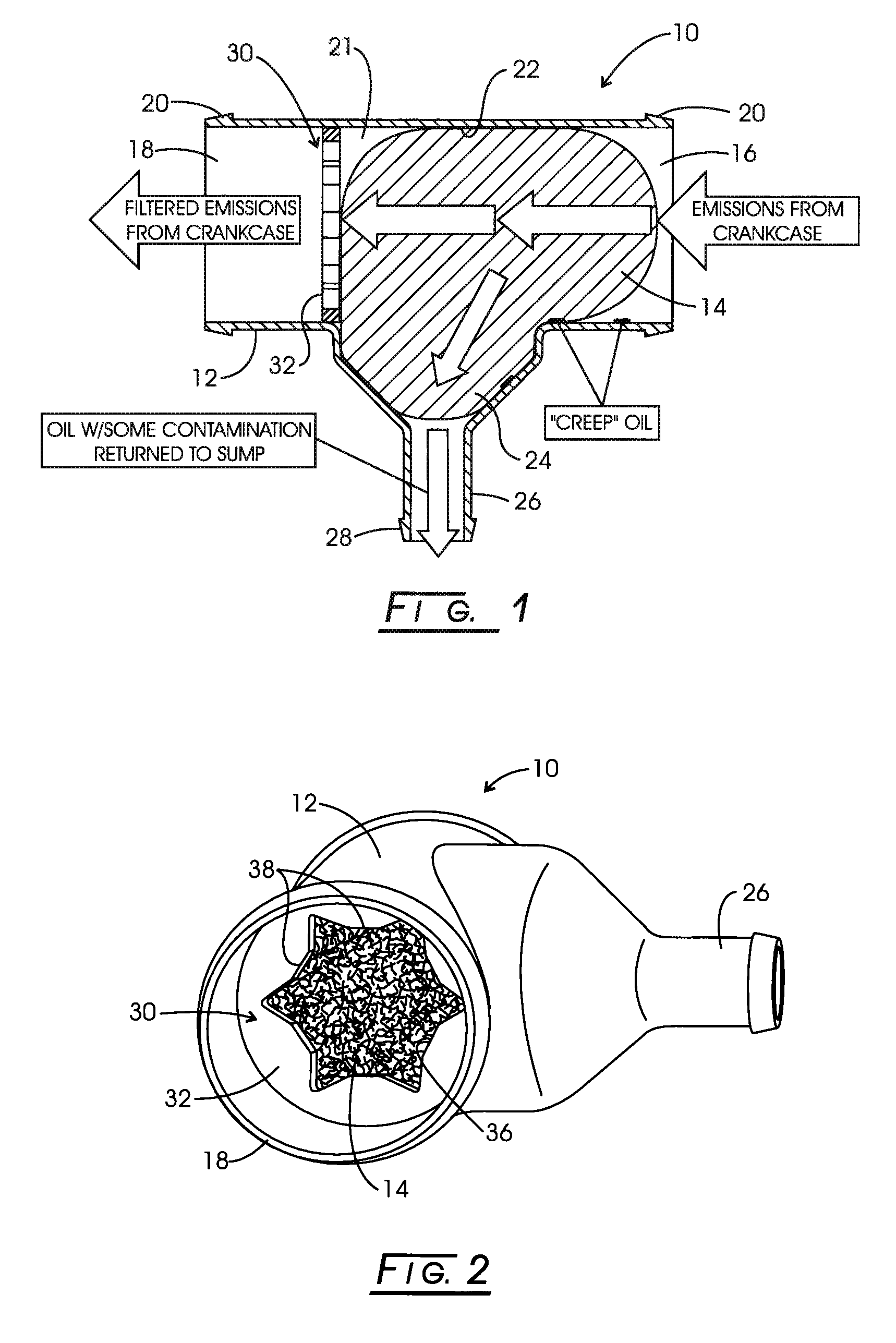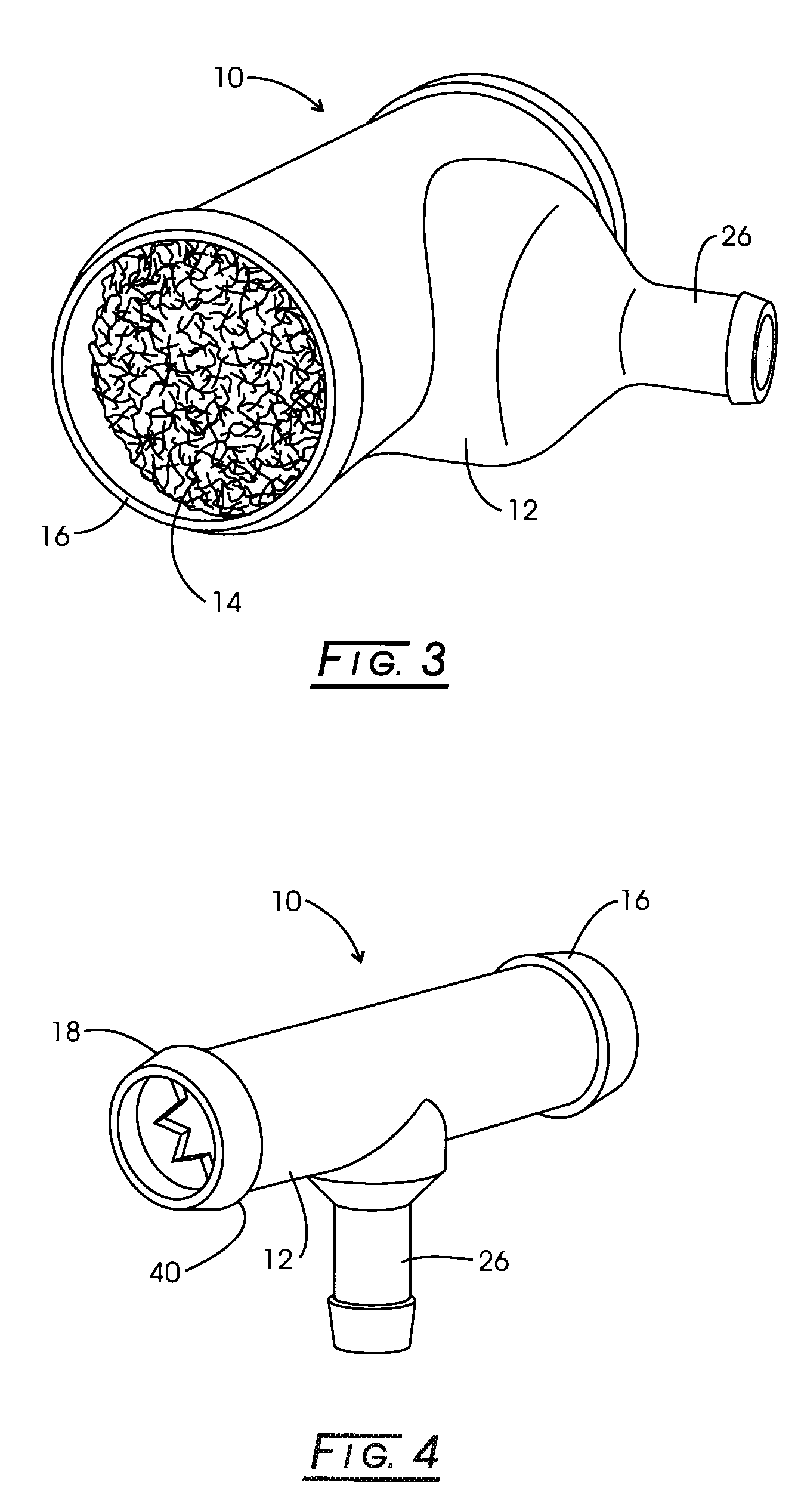Crankcase ventilation filter/pre-separator
a technology of pre-separator and crankcase, which is applied in the direction of combustion-air/fuel-air treatment, separation process, liquid degasification, etc., can solve the problems of internal engine contamination and efficiency loss, fouling expensive components, and contaminated beer with oil mist, so as to facilitate the return to the engine, easy assembly and easy attachment
- Summary
- Abstract
- Description
- Claims
- Application Information
AI Technical Summary
Benefits of technology
Problems solved by technology
Method used
Image
Examples
Embodiment Construction
[0003]Emission controls for internal combustion engines have become increasingly important as concerns over the environment have risen. One area where improvement has been noted is in crankcase emission controls.
[0004]Crankcase emissions result from gas escaping past the piston rings of an internal combustion engine and entering the crankcase due to high pressure in the cylinders during compression and combustion. As the blow-by gas passes through the crankcase and out the breather, the breather becomes contaminated with oil mist. The gas also contains wear particles and air / fuel emissions. In closed systems, the crankcase emissions are directed into the engine intake system causing internal engine contamination and loss of efficiency.
[0005]The oily crankcase emissions coat engine sites, such as the inside of engine compartments or chambers, fouling expensive components and increasing costs, such as clean-up, maintenance and repair costs. As the oily residue builds up on critical en...
PUM
| Property | Measurement | Unit |
|---|---|---|
| Diameter | aaaaa | aaaaa |
Abstract
Description
Claims
Application Information
 Login to View More
Login to View More - R&D
- Intellectual Property
- Life Sciences
- Materials
- Tech Scout
- Unparalleled Data Quality
- Higher Quality Content
- 60% Fewer Hallucinations
Browse by: Latest US Patents, China's latest patents, Technical Efficacy Thesaurus, Application Domain, Technology Topic, Popular Technical Reports.
© 2025 PatSnap. All rights reserved.Legal|Privacy policy|Modern Slavery Act Transparency Statement|Sitemap|About US| Contact US: help@patsnap.com



